Invisalign – McComb, OH
The Choice For Straighter Teeth

At one time, metal braces were the only option to achieve a flawless smile. Thanks to Invisalign clear braces, you can straighten your teeth without the hassle and embarrassment of traditional orthodontia. Adults and older teens can now enhance their appearances, without compromising their dignity, by wearing Invisalign clear braces. If you’re ready to get started and want a straighter smile you can be proud to show off, contact our office to schedule a consultation today!
How Invisalign Works

These removable, clear aligners cover your teeth, creating gentle pressure and moving them into alignment. Say goodbye to dealing with mouth sores, uncomfortable adjustments, and messy wax. Because treatment with Invisalign clear braces takes less time than traditional braces, usually only six to 18 months, you will achieve a gorgeous smile in no time at all. Feel free to remove the Invisalign clear braces to eat, brush, or for special occasions.
The way the process works is we will take 3-D images of your mouth so that a quality dental lab can produce your set of custom aligners. You’ll be expected to wear each aligner for two weeks and then move on to the next one. Your dentist will monitor the progress with regular appointments about every three weeks.
Invisalign Teen

Invisalign isn’t just for adults who want to straighten their teeth without the metal. The clear aligners can help teens, too! So, if your child is struggling to maintain a healthy, happy smile because their teeth are rotated out of position or there are considerable gaps between them, take the next step: schedule a consultation with us at our McComb dental office.
How is Invisalign Teen Different
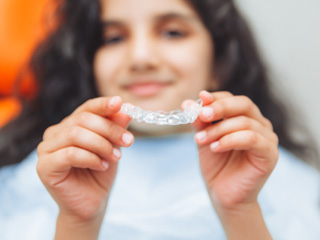
There are actually two key differences between Invisalign and Invisalign Teen:
- Invisalign Teen Aligners Have an Indicator Dot: Between school, extracurricular activities, and time with friends, it’s difficult to reinforce the daily wear time. That’s why Invisalign Teen aligners have an indicator dot; it gives us insight into how often they are wearing their aligners.
- Invisalign Teen Aligners Come with Replacement Trays: Even if your teen is typically pretty responsible, accidents sometimes happen. The good news is that if they do accidentally break or misplace one of their aligners, you don’t have to stress about additional fees.
Is Invisalign Right for Your Teen?

There are several factors we need to consider, including the complexity of your teen’s misalignment, the condition of their teeth and gums, and their willingness to commit to healthy habits, like brushing and flossing consistently. Outside of that, it’s important that your child fully understands the responsibilities that come with clear aligner treatment. In addition to keeping their aligners on for a minimum of 20 hours a day, they need to consistently clean them and place them in their designated case anytime they aren’t wearing them to prevent them from getting damaged or misplaced.
The Benefits of Invisalign Teen

Parents often assume that the benefits of Invisalign Teen begin and end with the discreet appearance of the aligners. The truth is that this smile-enhancing solution comes with several additional perks, including:
- There aren’t any dietary restrictions
- Maintaining a healthy smile is easy because the aligners are removable
- The aligners won’t get in the way of playing sports or musical instruments
- There are fewer check-in visits
- The average treatment timeline is shorter
Ultimately, if your teen would benefit from braces and they are interested in a metal-free journey to a straighter smile, then there’s only one thing left to do: schedule a consultation with us! From there, we can determine if they are a good candidate for clear aligners and, if they are, review the treatment process so they have a complete understanding of what to expect.
Who Can Invisalign Help?

In order to determine if you’re a good candidate for Invisalign treatment, you’ll need to come in to McComb Family Dental for a consultation with your dentist. After we have had the opportunity to examine your smile, we can then customize a treatment plan to address your individual needs. While certain problems may only be able to be addressed with traditional braces, patients with mild to moderate misalignment issues are frequently excellent candidates for Invisalign. This versatile treatment is often ideal for more mature patients, because they are responsible enough to adhere to treatment properly. Invisalign can be an amazing solution for correcting the following issues.
Crowded Teeth

As you age, crowding in your smile can become worse as your teeth shift. This can ultimately impact your oral and overall health by increasing your risk of developing many oral health problems including:
- Cavities and tooth decay
- Gum disease
- Jaw discomfort or aching (TMJ disorders)
- Difficulty or pain chewing and biting
Crowding can also cause your teeth to overlap, creating hard-to-reach spaces in your mouth that are difficult to properly clean. This can allow bacteria, food debris, and plaque to accumulate.
Invisalign aligners can shift your teeth, so they lay flush beside each other, allowing you to brush and floss easier and more efficiently. Plus, a straighter smile does wonders for your self-esteem!
Gaps Between Teeth

Having significant gaps between your teeth can be the result of natural bone development and oral anatomy, or from having too small teeth that don’t take up the proper amount of space. It can also be the result of a large jawbone or a variety of other natural factors. In some cases, it may be the result of bad oral habits like thumb-sucking or tongue-thrusting during childhood.
No matter what the cause, closing the gaps in your smile is the best solution for protecting your oral health, as it can easily reduce your risk of bacteria and plaque accumulating and causing decay, gum disease and gum inflammation.
In addition to treatment with Invisalign, your dentist may recommend closing some gaps with dental bonding.
Overbite

An overbite (also known as an overjet) is an alignment issue that causes your top teeth to stick out too far from your lower teeth. Overbites can frequently cause jaw pain, speech problems, uneven tooth wear, and difficulty or pain opening and closing your mouth. It can also leave your top teeth more exposed, which can increase your risk of injuring them if they’re not well protected.
Underbite

An underbite is the term used to describe the alignment of your smile when your bottom teeth jut slightly past or match with your top row of teeth when your mouth is closed. Underbites are often caused by genetics, oral trauma, tumors, and non-nutritive habits such as thumb or pacifier sucking.
Underbites can cause a variety of issues when left untreated, including an increased risk of sleep apnea due to a restricted airway in your upper nasal passages, mouth breathing, and problems speaking and chewing.
While underbites are typically easier to treat in younger patients, even as an adult they are important to correct. Typically, patients with underbites will require the use of rubber bands or Invisalign attachments that can be used in conjunction with their aligners to help gradually pull back the lower arch into a more ideal position.
Crossbite

A crossbite is the term used to describe when your bottom teeth are slightly in front of your upper arch of teeth, most often due to genetics, poor oral habits, or the premature loss of baby teeth.
Invisalign aligners can frequently correct this issue, but if it’s the result of jaw development problems, it may be necessary to use elastics or other accessories to help reposition the jaw into a more ideal placement.
If left untreated, a crossbite can cause many long-term issues, such as a higher risk of gum disease and tooth decay, jaw pain, speech difficulties, headaches, bruxism (teeth grinding) and facial asymmetry, which can lead to a lack of self-confidence.
Open Bite

An open bite is what occurs when your top and bottom front teeth cannot overlap or touch when you close your mouth completely. Open bites are frequently caused by poor bone development due to non-nutritive habits during childhood such as thumb and pacifier sucking.
In many cases, an open bite can cause difficulties pronouncing certain words and sounds, as well as excessive wear to the tooth enamel on the backs of your teeth which could increase their risk of damage.
Invisalign aligners can help by bringing the front top and bottom teeth together and correcting the bite pattern, thereby reducing the risk of damage and wear to your smile.
Benefits of Invisalign
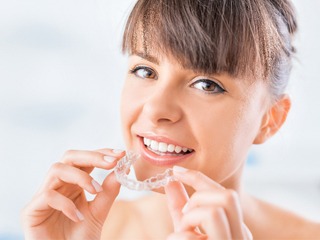
Without a doubt, Invisalign is worth the time and money. Not only will you be able to straighten your teeth more discreetly, but you’ll also see a noticeable difference in your smile in less time than it would take with traditional metal braces. Other benefits of Invisalign include:
- Aligners are clear and virtually unnoticeable
- They’re easily removed to eat, drink, and clean
- The aligners are smooth, so there’s no need to worry about irritation to your soft tissues
- Easy to clean (toothbrush, clear soap, and lukewarm water)
- Faster treatment with the average treatment lasting anywhere from 6-18 months
- No restrictions in regard to your diet
- Only minimal discomfort, as there are no wires to tighten
Living with Invisalign Aligners

Whether you only recently started considering Invisalign or your initial consultation is already on the calendar, it’s normal to want to know as much about the treatment process as possible. For example, do you need to make any adjustments to your diet? How often do you need to schedule check-in visits? What happens if you accidentally lose one of your aligners? Don’t worry – you can read on to learn the answers!
Wearing Your Trays

Have you heard people refer to the “20-22 hour-a-day wear-time” rule? Basically, this means that you need to wear your aligners for the vast majority of the day in order to stay on-track with your treatment plan. The easiest way to make this goal a reality is to get in the habit of only taking your trays off when absolutely necessary and putting them back on as soon as you can. If needed, you can use the stopwatch on your phone or the timer on the Invisalign app as a guide too!
Cleaning Your Aligners
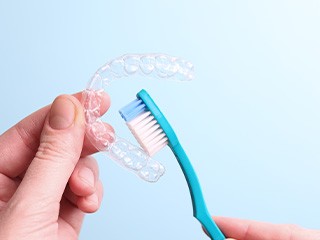
Good news: you don’t need to completely overhaul your dental care regimen with Invisalign. In fact, there are only a few small changes you need to make to your routine. The first is brushing your teeth after each meal and snack so the food particles don’t get trapped against your teeth for hours on end. The second is using a soft-bristled toothbrush and cool water to clean your aligners. You can also soak them in a dentist-recommended solution while you eat dinner for a deeper clean.
Eating with Invisalign

One of the many perks of Invisalign is that there aren’t any dietary restrictions. That said, there are a few things you should keep in mind. The first is that extremely crunchy foods, like hard pretzels, can cause an attachment to break or your tooth to chip, so it’s best to avoid them altogether. It’s also important that you store your aligners in their designated case instead of wrapping them in a napkin or leaving them on your plate. That way, there’s a lower chance of them accidentally getting misplaced.
Losing a Tray

Sometimes, accidents happen! If you realize that your aligners aren’t where you thought they were, it’s important to quickly determine the last place you had them. Then, carefully retrace your steps from there. Since the aligners are see-through, they will likely be more difficult to find. Make sure that you look in “random” places, like the waste bin or the center console of your car, as well. If you can’t find them, call our team at McComb Family Dental.
Routine Check-In Visits

Another important component of life with Invisalign is the routine check-in visits. Instead of every four weeks (which is the case with traditional braces), they are typically every six or eight weeks, which means you’ll spend significantly less time in the treatment chair overall. Not only that, but if your teeth are tracking as anticipated, there’s a good chance that you’ll be in and out of our office in 20 minutes or less!
Understanding the Cost of Invisalign

Whether you’re visiting us for a routine checkup or a cosmetic dental treatment, like Invisalign, you might be curious how much it costs. Don’t worry – we won’t leave you in the dark! At your consultation, we will provide you with an estimate and review all of the financial solutions available, including our latest special offers. In the meantime, you can read on to learn some general information on the topic.
Factors That Affect the Cost of Invisalign

The cost of your Invisalign treatment will be determined during your initial consultation with one of our highly skilled dentists. At this time, they will learn about factors unique to you, including:
- The severity of your dental needs
- If any pre-Invisalign dental work is needed
- The number of aligners you’ll need throughout your treatment
- Your age
- The type of retainer you need
With all of this information, they can create your custom treatment plan and provide you with an estimate of the cost.
Does Invisalign Cost More Than Mail-In Aligners?
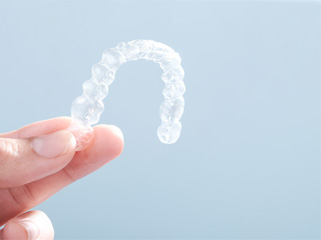
Typically, Invisalign costs more than mail-in aligners. That’s because mail-in options rely on DIY impressions, aren’t supervised by licensed dental professionals, and have left many patients with worsened misalignment. Those are just a few of the many reasons professional organizations, like the American Dental Association, recommend choosing a tested, proven, and reliable orthodontic treatment, like Invisalign. Although the upfront cost may be higher, it’s well worth the investment.
Does Dental Insurance Cover Invisalign?

In addition to improving the appearance of your smile, Invisalign improves its health and function by bringing your teeth and bite into proper alignment. For that reason, many dental insurance providers cover a portion of the cost. Of course, dental plans vary, so it’s important to read through the fine print on yours to see what is and isn’t covered. If you need any assistance, you can always give us a call. We’d be happy to do what we can to make the process of utilizing your available benefits easy.
Options for Making Invisalign Affordable

Since roughly 50% of patients don’t have dental insurance, we recognize the importance of offering other financial solutions. In addition to periodic promotions, like a free cosmetic consultation, we welcome CareCredit. This trusted third-party financier offers several payment plans with little-to-no interest attached. All you need to do is determine your monthly budget, select a payment plan, and sign up. Then, you can pay for your Invisalign treatment in small, more manageable monthly chunks instead of all at once.
If you are interested in learning more about the cost of Invisalign, then take the next step: schedule a consultation with our McComb dental team!
Invisalign FAQs
How Long Does Invisalign Take?
On average, Invisalign delivers results in just 12-18 months. That said, the length of your teeth-straightening journey will depend on a few key factors, including the complexity of your case and how long you wear each set of aligners. It’s also possible for obstacles to arise throughout the process, like accidentally losing an aligner or a cavity developing. Rest assured, we will provide you with an estimate of your treatment timeline at your consultation, and we will also discuss what you should and shouldn’t do to avoid frustrating delays.
My Aligners Are Turning Yellow. What Should I Do?
If your aligners are turning yellow, then try going back to the basics. That starts with taking them off before eating or drinking anything (other than water) and extends to putting them in their designated case instead of leaving them out on the counter or wrapped in a napkin. It’s also important that you take great care of your teeth and use a soft-bristled toothbrush to clean your trays each morning and night. If you still find that they aren’t as clear as you’d like, try soaking them in a dentist-recommended clear aligner solution for 15 minutes or so each day too!
Is There Anything I Can’t Eat with Invisalign?
You can’t eat anything with your aligners on (otherwise, it won’t be long before they stain, warp, or crack). However, once you remove them and store them properly, you can eat all of your favorite foods! If you have attachments, then you may find it helpful to avoid crunchier foods, like popcorn, almonds, and raw celery. That way, they don’t accidentally break, necessitating a same-day visit to our office.
Tip: Fill your plate with lots of nutrient-dense foods! Not only will this benefit your overall health, but it will also help keep your teeth strong and your gums infection-free.
Will I Need Attachments?
Possibly! Attachments are typically used when patients have more moderate cases of malocclusion. That way, the aligners have something to grip, helping them move the teeth into proper alignment. Ultimately, whether or not you need attachments or any other orthodontic accessories will be decided at your initial consultation.
What Happens After Invisalign?
After Invisalign comes the retention phase. At this point, our focus shifts from moving your teeth into proper alignment to keeping them there. We’ll take impressions of your teeth, have a custom retainer made, and give specific instructions on when to wear it to reduce your chances of experiencing orthodontic relapse. We’ll also let you know how to take good care of it so that it stays stain and odor-free until it’s time to have it replaced.



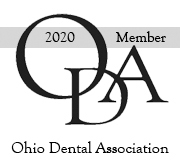 Request More Details
Request More Details